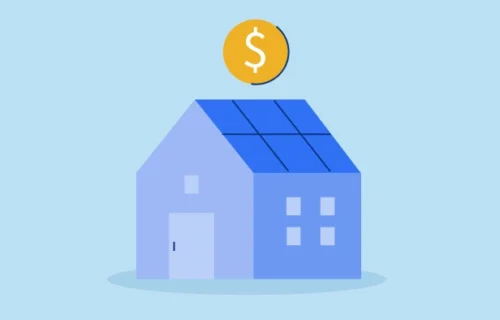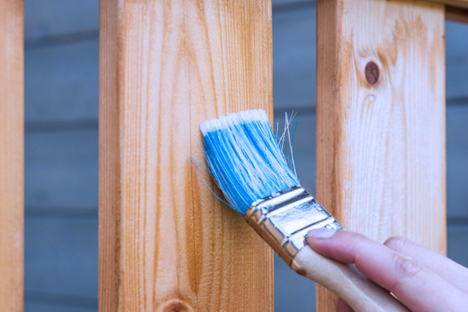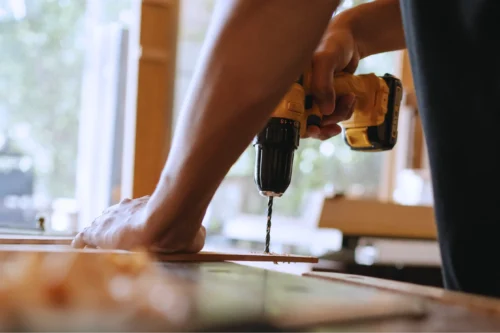
Connect with a Lima One expert today!
If you’d like to know more about this topic or see how it applies to your project, let’s talk.
Calculating Leverage for Your Next Real Estate Investment
Considering Leverage? Here's What Investors Should Know
The concept of leverage is vital for real estate investors who want to grow their portfolios. Investors can accelerate their business growth and profits by using the equity they’ve created to purchase more investment properties.
Leveraging capital frees up real estate investors to do more deals without increasing cash outlay. Aggressive investors see leveraging real estate as the best way to own more doors and therefore increase monthly income.
As a real estate investor, you need to know:
What is leverage?
Why should I use it?
How do I calculate leverage?
How does leverage increase my ROI?
Real Estate Leverage Defined
So, what is leverage in real estate? Simply put, leverage is using borrowed money to increase the return on an investment.
The idea behind leveraging real estate is to use other people’s money to increase your returns without having to put as much of your capital into buying a property.
Leverage allows a real estate investor to do two things:
- Purchase a property that costs more than they have
- Spread out their cash to multiple properties
For Example:
Let’s say an investor wants to purchase a home to flip. The home’s price tag is $150,000 plus an additional $50,000 needed for rehab. The investor uses a hard money loan and only puts down 10% of the purchase price and rehab, so they end up using $20,000 of their own money to fund the deal. After rehab, the investor then sells the home for $350,000.
After paying back their fix and flip loan plus interest as well as the realtor fees, they earn a profit around $170,000 from the $20,000 upfront investment. That’s the equity in the property created from the fix and flip rehab.
Leverage allows you as the real estate investor to get this equity even if you decide to hold the property instead of selling. By getting a long-term hard money loan based on 80% of the $350,000 after-repair value, the investor can get cash out to cover the $180,000 owed on the original loan and still have $100,000 in cash to put toward the next purchase. Using that cash allows the investor to get loans for more investment properties without more upfront cash—and thus grow their real estate investment portfolio faster and create the potential to earn more.
How to Calculate Real Estate Leverage
Calculating leverage is an important first step before you decide if it's right for your investment strategy. Calculating leverage is pretty simple, and there are a couple of different ways it can be done.
One way you can calculate leverage in real estate is by dividing your property financing by the cost of the property. This is called loan-to-cost, or LTC.
Another way to calculate leverage is the loan-to-value ratio (LTV). The LTV ratio can be found by dividing the amount of your mortgage by the current value of your property. LTV is valuable in situations where an investor has paid to fix and flip a property. In these cases, the leverage is based on the after-repair value, or ARV, and may be expressed as LTARV. You can also calculate an LTV without rehab if an investment property appreciates in value over time.
Lenders and financial institutions often use the leverage ratio to analyze businesses in need of loans. The leverage ratio paints an important picture of operational efficiency of a company for investors, financial institutions, and credit rating agencies. Leverage ratios also offer an insight into a company’s financial health, ability to meet debt repayment, and its debt-to-equity ratio.
In real estate investment, leverage ratios ensure that an investor does not borrow beyond the value of an investment property. This helps to ensure the investment succeeds so that the investor continues to profit.
Why Leverage Your Real Estate Investments
Most investors get into real estate with the hopes of turning a profit, and leverage is a great way to make that happen. The main reason real estate investors choose leverage is this: They want to maximize their returns by growing their real estate investment portfolios quickly without putting all their cash into deals. The more you leverage, the more you increase your potential for ROI.
Leveraged real estate tends to work best when rents and property values are consistently increasing, and most investors are experiencing that because of the current housing boom. Investors also increase property values through the rehab they do to homes—whether it be cosmetic things like kitchen upgrades or heavy rehab that adds square footage.
When rent rises and the value of investment property increases, investors see a constant monthly mortgage for their rental properties which creates larger profits. The current hot housing market marked by tight inventory has helped rents and property values appreciate handsomely. It has created the ideal environment for a real estate investor who knows how to leverage.
By using more leveraged investments, as in the cash-out refinance example referenced earlier, you’re also increasing your ability to purchase more or even higher-value investment properties, which exponentially increases your net gain by multiplying it across multiple properties in your portfolio.
How to Avoid Risks with Leverage in Real Estate
Just like everything else in life, there are downsides to using leverage and risks to avoid. Are you considering leverage as an option? Keep these tips in mind:
A low-down payment could lead to a high monthly payment. Make sure your properties cash flow properly.
Property values don’t always appreciate. Make sure your deals are rock-solid at purchase, with realistic ARVs.
Leverage is a great tool for real estate investors that allows them to do multiple deals and increase overall profits and return on investment.
When you understand your current loans, how large your portfolio can and should grow, and decide on how to finance your investments, you will know whether or not you’re prepared to take on the next great investment opportunity. When you find that opportunity, you’ll know whether it provides a chance for leverage, or if it's a deal that you should sell-off other properties to acquire.
Regardless of what you decide, Lima One is here to help. Our loans are specially tailored for real estate investors and our streamlined lending process will allow you to move quickly once you decide which route to take. We can help make leverage work for you and provide insights into growing your single-family rental, multifamily, or fix-and-flip portfolios.
Contact our team today to get started.
Editors note: This post was originally published in 2021 and has been updated as of August 2024 for comprehensiveness.
Subscribe for More Insights
Get the latest industry news & Lima One updates.









